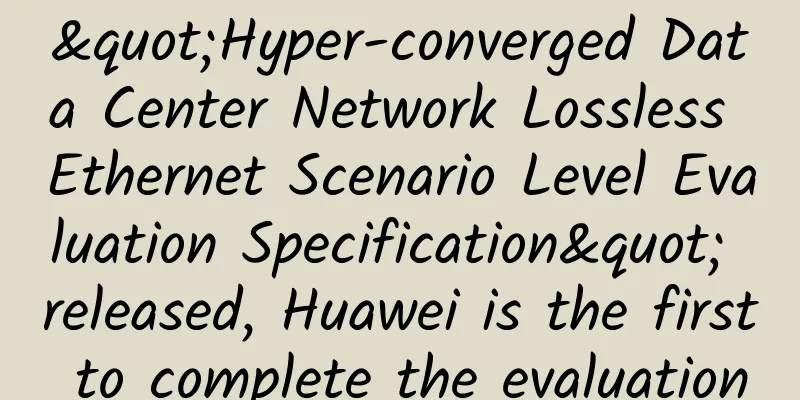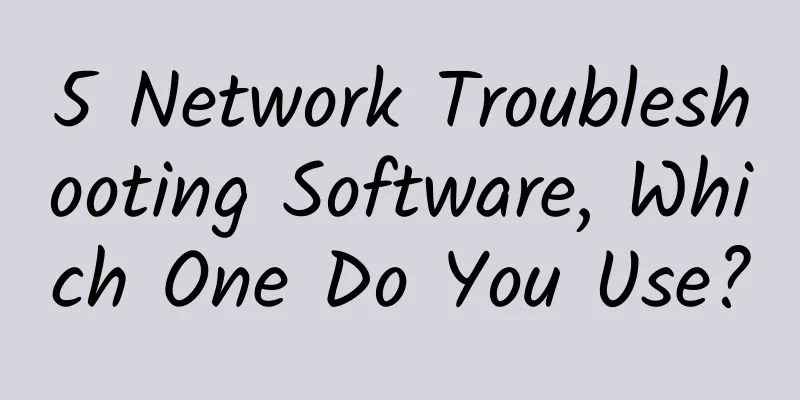"Hyper-converged Data Center Network Lossless Ethernet Scenario Level Evaluation Specification" released, Huawei is the first to complete the evaluation

|
The "2021 Open Data Center Summit" was held in Beijing from September 15 to 16. In the release of the results of the ODCC Summit on September 15, the "Hyper-converged Data Center Network Lossless Ethernet Scenario Level Evaluation Specification" was released. The level evaluation specification was jointly drafted and released by the China Academy of Information and Communications Technology (Cloud Computing and Big Data Research Institute), Huawei Technologies Co., Ltd., China Mobile Research Institute, Beijing Jingdong Century Trading Co., Ltd., Industrial and Commercial Bank of China Data Center, Broadcom, Keysight Technologies (China) Co., Ltd., and Spirent Communications. How to download the Hyper-converged Data Center Network Lossless Ethernet Scenario Level Evaluation Specification With the widespread deployment of mobile Internet, big data, cloud computing, blockchain and other related applications, as well as the rise of strong experience applications such as 5G intelligent industrial control, HPC simulation verification, and AI risk control in data centers, data centers have become the commanding heights of traffic and business in the digital economy era. Hyper-converged data center networks are designed to provide converged and lossless interconnection for cloud data centers. The current standards for lossless Ethernet networks in data centers are becoming more mature, but the industry does not yet have relevant performance grading and evaluation specifications, and the quality of lossless Ethernet networks cannot be uniformly evaluated. Therefore, a unified performance grading and evaluation specification is urgently needed to standardize the deployment and use of lossless Ethernet networks in data centers. The grade evaluation specifications released this time are based on distributed storage scenarios, centralized storage scenarios, and high-performance computing scenarios, and are evaluated from five dimensions: function, performance, reliability, compatibility, and operation and maintenance. A score of 0-5 is given to each sub-scenario and the corresponding five dimensions according to the evaluation criteria. The weighted calculation is then used to define the grade of the lossless Ethernet network, which is currently divided into five levels: L1 (lossless capability is not yet mature, and performance is low), L2 (basic lossless capability), L3 (mature lossless capability), L4 (good lossless capability), and L5 (excellent lossless capability). The official release of this level evaluation specification marks the maturity and standardization of the testing, application and deployment of lossless Ethernet networks, and also points out the direction for the development and application of lossless Ethernet network technology. As a pioneer on the road of hyper-convergence, Huawei launched the hyper-converged data center network CloudFabric 3.0 in March. Based on a three-layer converged architecture, it can help data flow and process efficiently, release computing power 100%, and build a solid computing power foundation for the digital economy and enterprise digital transformation. At the same time, as a major contributor to the evaluation specification, Huawei also took the lead in simultaneously entrusting the China Academy of Information and Communications Technology to evaluate Huawei's data center full lossless Ethernet network solution according to the level evaluation specification. Through the test of 50+ indicators, Huawei's full lossless Ethernet network solution scored 3.5, 3.8 and 3.3 in the three major scenarios of distributed storage, centralized storage, and high-performance computing (HPC), respectively, and scored 3.5 points overall, indicating that Huawei's hyper-converged data center network full lossless Ethernet network solution can meet the mature commercial needs of various scenarios. Since its launch, Huawei's hyper-converged data center lossless Ethernet solution has been used in many joint innovations and commercial deployments in industries such as finance, operators, and large enterprises. Looking to the future, Huawei will continue to work with industry partners to actively promote the promotion and development of lossless Ethernet network scenario evaluation, create a new pattern for the development of lossless Ethernet networks, and make more contributions to accelerating the digital transformation of enterprises. |
<<: Is 5G connectivity the future of IoT?
Recommend
Two threads, two mutexes, how can a dead loop be formed?
[[351971]] Fans’ questions must be arranged. How ...
This article will help you understand the technical principles of CDN!
Hello everyone, I am Brother Shu! I believe every...
Application of Passive WDM Technology in 5G Fronthaul
Labs Guide Passive WDM technology is the main tec...
China's 5G users account for more than 70% of the world's total
The latest data from the Ministry of Industry and...
The 10 most powerful companies in enterprise networking in 2021
[[409960]] Last year, the global spread of the ep...
Five firewall configuration mistakes to avoid
A misconfigured firewall can be just as dangerous...
my country's mobile internet traffic increased by 23.4% year-on-year during the Spring Festival holiday
Unlike in the past, affected by the epidemic, thi...
Ethernet Packet Architecture
[[352785]] 01Overview The term Ethernet generally...
Industry Events in October 2019
October 2019 is coming to an end. What major even...
After rejecting Huawei, 5G development in Europe and the United States is suffering. Netizens: They are reaping the consequences
In order to boycott Huawei's 5G equipment, th...
China Mobile slams on the brakes. What is the reason?
Recently, the three major operators represented b...
6 ways 5G will change IoT solutions
The implementation of 5G will facilitate the deve...
GoLang: Do you really understand HTTPS?
For a long time, the laboratory and even the enti...
How do we correctly interrupt a thread that is executing? ?
[[358852]] The author has developed a simple, sta...
Cisco Unleashes Unlimited Opportunities with Industry’s First Open, Intent-Based Networking Platform
The three major technological changes of the Inte...









